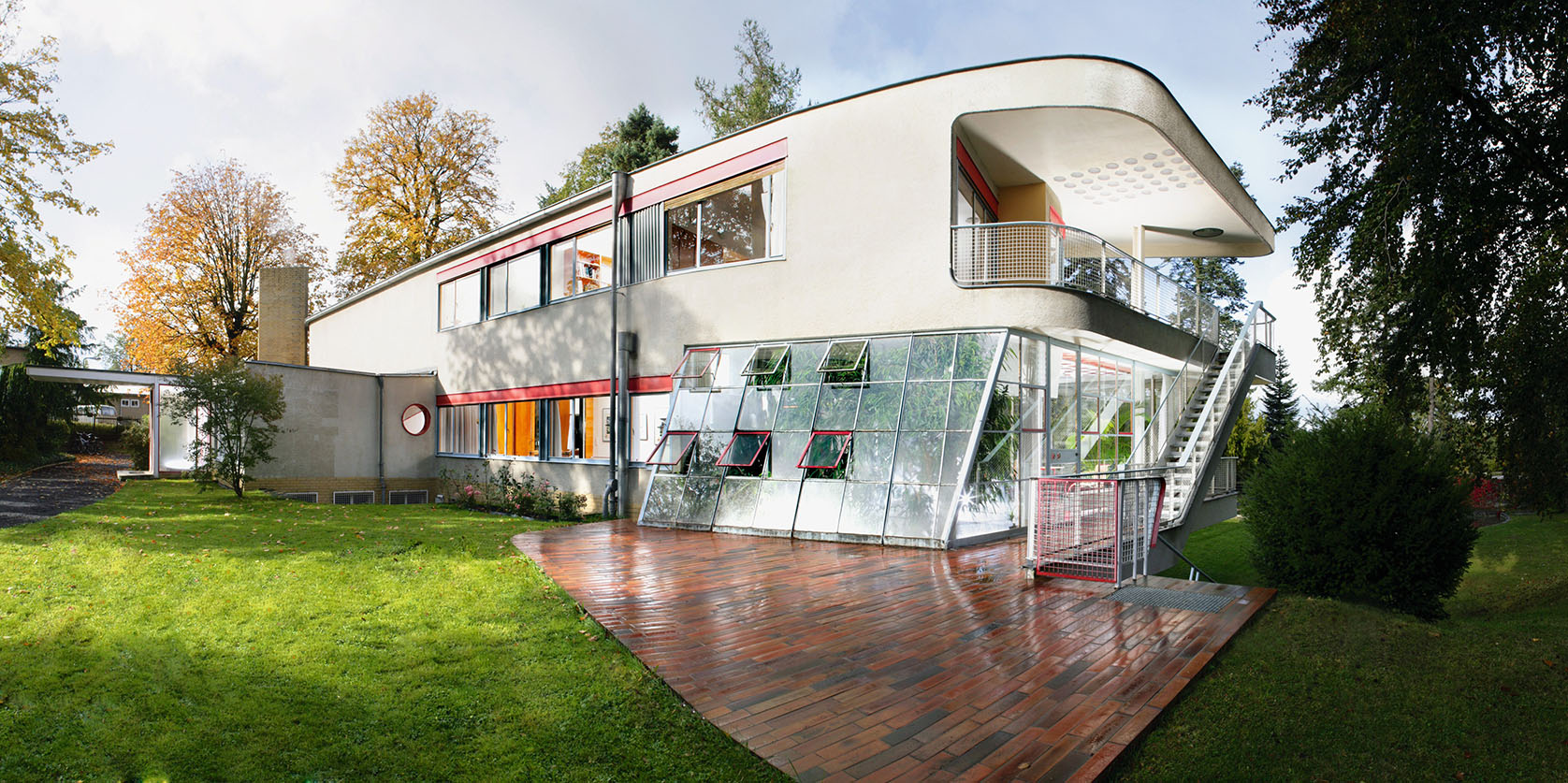About the location
The Schminke House in the district town of Löbau in Upper Lusatia was designed by Hans Scharoun, the architect who achieved world fame decades later with the ground-breaking construction of the Philharmonie in Berlin. The building is considered by experts to be one of the four most important residential buildings of classical modernism in the world and is worth a visit in itself. Hans Scharoun (1893–1972) worked as a professor at the Academy of Arts and Crafts in Breslau for seven years from 1925 and also ran an architectural practice in Berlin until the early 1930s.
Fritz Schminke, builder of the house and owner of the neighbouring pasta factory, and his wife Charlotte were looking for an architect at the end of the 1920s to create a new residential building for their family of six that was both prestigious and functional. At the »Wohnung und Werkraum« building exhibition in 1929, they came across a project by Scharoun, whose style won them over. For him, who remained friends with the Schminke family, the building was of particular importance. He stated that »the house that the factory owner Schminke had built in Löbau was my favourite.« Possibly also because there was a very lively design process with the client, which was characterised by both controversy and great creative freedom.
The Schminke factory owner's villa was not completed until after Hitler came to power in 1933. Although the Nazis categorised Scharoun as a representative of »degenerate art«, he remained in Germany and from then on earned his living from private building commissions. The Schminke House was subject to the changing times and owners from 1945 onwards. It was only when the daughters of the Schminke family relinquished their right to have the house returned to them in 1993 that the conditions for its current public use were created. The town of Löbau transferred ownership of the house and building to the Schminke House Foundation.
